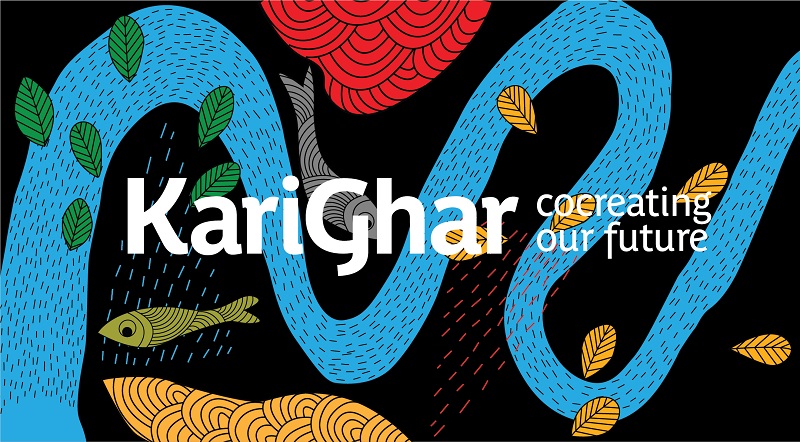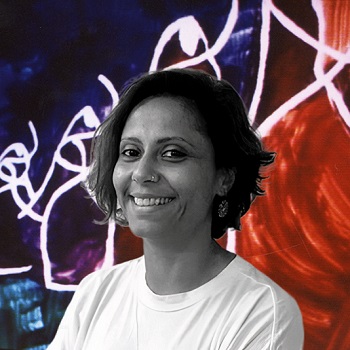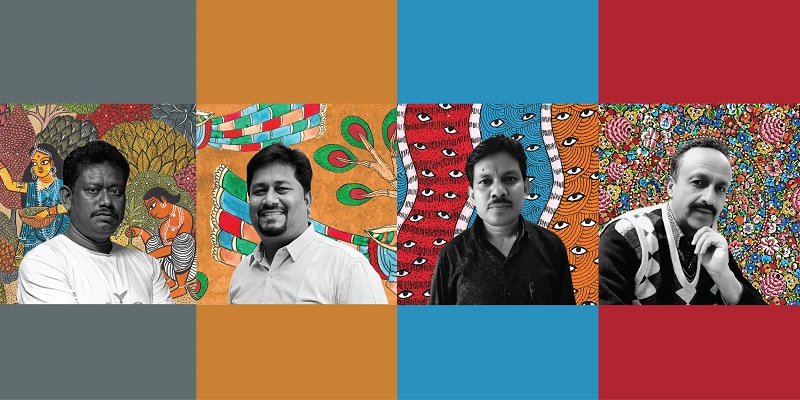Motion design and storytelling firm Switch Studio that has been working in collaboration with a diverse range of specialists across fields and interests made the perfect use of the pandemic years to develop an interesting project named KariGhar. The project is a perfect example of traditional Indian art marrying technology, which in future might explore the metaverse space as well.
In an in-depth interview with Animation Xpress, Switch Studio founder Upasana Nattoji Roy explained that KariGhar, in effect, is an experiment to see if an equitable ecosystem of collaboration between traditional and digital artists can be developed which shall also lead to exchange of knowledge and maybe even an alternative economic system. The program is designed as an open source project and the model can then be used across various craft forms along with the design and art community.
“KariGhar emerged through conversations that occurred during the pandemic through Zoom and WhatsApp calls. At first the discussions were between my mentor (also my aunt) and myself while I was exploring the possibilities of creating a collaborative project between craft, animation and technology,” Upasana said.
In October 2020, she was part of a Tech Art fellowship with Befantastic – supported by British Council India and Goethe Institute, which introduced her to some of the developments and possibilities in art through emerging technologies. While she developed a proposal in the TechArt realm, it dawned on her that there is a massive and growing digital divide between artists.
“At first I thought that it was a language barrier since most of the technologies were being developed primarily in English. But I soon realised that a lot of my colleagues and peers from design school were not cued into the technological developments which are directly related to our field of work. That led me to wonder how large the gap would be between those who were working mainly through the internet and those who were not,” the National Institute of Design graduate (NID) explained.
In December 2020, Upasana got the Film fellowship from Sahapedia which helped her widen that project to four artisans. They mainly worked on painted artforms and their interactions with her happened virtually. The idea was to strike a conversation between traditional artists and technologists about the depiction of their concept of home. It’s a joint effort to keep the traditional art forms alive and make them available on digital platforms for a larger audience.
“We started by sharing how and what we created as artists, but the why remained evasive. I soon realized that a meaningful exchange would occur only if we co-created something. That is when I started discussing my ‘Idea of Home’ with each of them and urged to know about theirs. Through dialogue and exchange of experiences we arrived at personal narratives about each of the homes of the four artisans. This idea was next translated into artworks in each of their styles which served as the foundation for transmedia outcomes in phase two of the KariGhar program. We use the word transmedia loosely to mean across various mediums of art (like animation of Patachitra, making stickers of traditional hand paintings using AI, etc.) irrespective of whether they are digital or analog,” she explained.
Upasana and NID alumnus Saurav Roy jointly run Switch Studio. She leads the program and creates the projects in the design space, whereas Roy supports the development of the proposals. Kalpana Das who is an educator and mentor in the field of multi-culture and pluralism for more than 50 years has been mentoring them and keeping them aligned with the purpose of this program.
Vishpala Hundekari and Devika Krishnan connected them with the four artisans and guided them on ways to work with the artisan community. Hasan S. is a creative technologist who advises the team on outcomes that involve emerging technologies.
The four artists for 2021-22 are:
- Chetan Gangvane from Kudal, Maharashtra, who practices Chitrakathi and Puppets
- Bahadur and family from Medinipur, West Bengal who is a Patua
- Maqbool Jan, a paper mache artist and painter from Srinagar, Jammu and Kashmir
- Heeraman Urweti and his wife who are both Gond artists from Bhopal
The development of the program has been covered in a documentary called Coding with Craft which is currently hosted on the Sahapedia Platform.
Expressing her contentment over the response that the project has garnered, Upasana said, “It has been a very heartening response from those who have seen it with questions about ways they can support and participate in it. The four artisans are eagerly waiting for the outcomes like the films and stickers to be produced and we are looking for grants and support to make them a reality.”
She states that the KariGhar program as a whole is medium agnostic. When they use the word Transmedia – they do not limit themselves to the digital mediums alone but include all mediums of expression and art.
Asked if they plan to explore the metaverse, Upasana said, “definitely, though we approach it with research and thought. With the rise and exponential development in the digital realm many industries are converging – in fact the world is converging. A lot of digital product and gaming companies and their users are actively working to develop an interconnected digital universe which is meant to be the metaverse. But an estimated 30-40 per cent of the world’s population have still never used the Internet. The fragility of human species on Earth has never been more pronounced than today as we inch into irrelevance and extinction if we are not able to find a balance between commercial progress and reality of living.
Our philosophy stems from the need to find our place in the world as a human being and part of nature. Our KariGhar explorations are meant to create projects that help the whole tribe of collaborators actively participate, co create and co own them. So that will also apply to those being developed for the metaverse where artisans have access to how it works and technologists and designers have access to knowledge systems that can only be experienced with our feet firmly rooted in reality.”
Apart from Karighar, the studio also has two other design and art projects in the pipeline: Give Me a Sign which is an interactive storytelling tool and tech art installation which uses machine learning and hand gestures from Indian dance – to trigger urgent and important conversations of multiplicity, climate crisis and the anthropocene. This will be presented at the Future Fantastic festival in Manchester and Bangalore supported by the British council ‘India/ UK Together’ grant.
The studio is co-producing a unique live performance called When Walls Dance that brings together age-old and modern art forms of Bharata Natyam, the tribal art of the Warli tribe and projections of animation and motion design. It is a concept by Prachi Saathi and co-created by her and Upasana.
Beyond these design programs, Switch Studio specializes in creating visuals for music and dance performances, brand films, main titles and show packaging for OTT platforms like Netflix, Amazon Prime etc.




